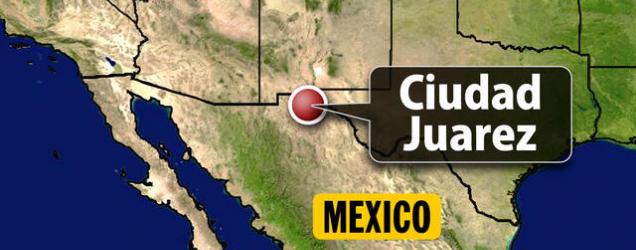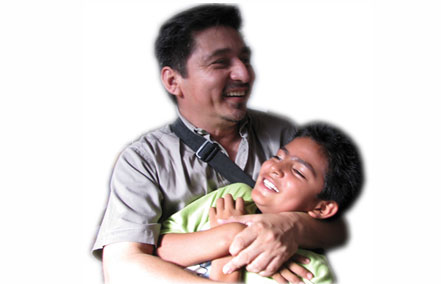Par Salvador Stadthagen
Certains quartiers du Salvador et du Honduras sont connus de manière incongrue sous des noms tels que « Paradis Divin » ou « Champ du Ciel ». Si vous marchez dans les rues pavées de Mejicanos, Apopa ou Soyapango au Salvador ou Nueva Suyapa, Rivera Hernández ou López Arellano au Honduras, vous verrez les gens avoir de l'eau et de l'électricité. Il existe même une poignée d'entreprises et d'industries arborant des pancartes annonçant Coca Cola ou de l'eau purifiée.. Ces barrios donnent l’apparence d’une pauvreté « tolérable ». La réalité des jeunes qui y grandissent est bien plus sombre et dangereuse que les apparences ne le suggèrent.. Dans ces quartiers, la vie d’un jeune vaut moins qu’une paire de baskets Adidas, ou un téléphone portable, ou un T-shirt de marque. Ces quartiers sont au cœur du phénomène des jeunes et des gangs.
Le programme Regional Youth Alliance, financé par l'USAID, que je dirige en coordination avec le système régional d'intégration centraméricain. (SICA) a récemment organisé des groupes de discussion avec des jeunes dans les quartiers les plus violents de Tegucigalpa. L'histoire qu'ils racontent est sombre. Des jeunes dans d'énormes quartiers de 160,000 comme Chamelecon ou López Arellano au Honduras, ils ont peu d'endroits sûrs où aller. Les enfants grandissent sans enfance. Les jeunes ont peur de sortir de chez eux la nuit, peur de marcher jusqu'à l'école ou au travail le matin ou de rentrer à la maison le soir. Même les terrains de foot, longtemps un mode de vie sain pour la jeunesse centraméricaine, ne sont plus en sécurité. De nombreux homicides se produisent désormais en plein jour pendant les matchs.
Les gangs s’enracinent dans la fibre même de la communauté. Les écoles deviennent un endroit dangereux. Une vague d’homicides et d’extorsion déferle sur le système scolaire public au Salvador. L'extorsion devient un mode de vie. Rester en vie a un coût : il faut le « louer ». Les étudiants paient aux gangs un quart par jour pour pouvoir étudier. Les enseignants sont intimidés pour qu'ils versent un loyer ou une somme de protection aux membres des gangs du quartier sur chaque chèque de paie.. Des jeunes qui proposent des services en porte-à-porte (livreurs), les chauffeurs de bus et les contrôleurs de billets sont tués parce qu’ils ne paient pas leur « loyer ». Les plus jeunes collectent pour leur 16-18 des chefs de gangs âgés d'un an et lorsqu'ils ne présentent pas de comptes clairs, eux aussi sont tués. Le taux d'homicides au Salvador a grimpé à plus de 75 par 100,000 dans 2009 et la plupart des auteurs sont des jeunes.
Au Salvador, les structures des gangs sont plus solides et militantes, conserver une culture de gang traditionnelle. Au Honduras, les gangs de jeunes se tournent vers les meurtres et le trafic pour le compte des criminels de drogue. Les liens entre trafiquants de drogue et gangs deviennent de plus en plus évidents, au Salvador tout comme au Honduras et au Guatemala, alors que les trafiquants déversent de la drogue le long des routes de transit, que les gangs colportent désormais de plus en plus localement.
L'émigration a miné les structures familiales. De nombreux anciens membres de gangs nous racontent qu'ils ont été élevés par des grands-mères ou des proches.. Au Salvador, on estime qu’un cinquième à un quart de la population du pays est allé aux États-Unis. trouver du travail. Les parents ont laissé leurs enfants être élevés par des grands-mères, oncles, cousins, et même par les frères et sœurs plus âgés. Les parents ont envoyé de l'argent pour payer la nourriture, fournitures scolaires, soins médicaux, même les frais de scolarité dans un collège local dans certains cas. Mais, grandir sans l’influence et la protection de leurs parents, ces enfants sont devenus un terrain fertile pour le recrutement de gangs.
Les déportés des ghettos ou des prisons de Los Angeles renforcent les gangs dans leur pays d’origine et renforcent les liens criminels internationaux. Les déportés qui reviennent dans les communautés semi-rurales montent des clicas de type urbain (cellules). En tant qu'assassins rémunérés, ou des tueurs à gages, Les expulsés criminels endurcis collectent suffisamment d’argent pour retourner aux États-Unis. en seulement trois mois. Autres déportés vers le Honduras, Le Salvador et le Guatemala parlent à peine espagnol et sont des proies faciles pour les gangs locaux..
La stigmatisation des gangs attachée à ces quartiers rend encore plus difficile la recherche d'emploi pour les jeunes.. Les jeunes de Nueva Suyapa nous ont dit qu'ils n'osent pas inscrire le nom de leur quartier sur les candidatures., car ils seraient automatiquement refusés. Au lieu de cela, ils énumèrent un quartier plus acceptable.
Les communautés du Barrio ont besoin que leur gouvernement et leurs donateurs les aident à s'attaquer de front au problème des gangs.. Les approches durables face à la nature virale des gangs doivent comprendre les réalités de ces quartiers. Construire un terrain de football peut sembler évident jusqu'à ce que l'on comprenne que de nombreux parcs et terrains mais aussi des bâtiments communautaires et même des écoles sont déjà là mais ont été abandonnés ou sont sous-utilisés.. Le renforcement et la réhabilitation du « matériel » de ces infrastructures doivent être liés au « logiciel » des programmes qui offrent un environnement protecteur et stimulant..
Les organisations confessionnelles ont besoin de soutien. Ils sont présents presque partout et constituent souvent le seul ciment qui maintient ensemble les fondations en ruine de ces communautés.. Avec de maigres ressources, ces prêtres, les pasteurs et les missions aident les personnes confrontées à une combinaison mortelle d’exclusion, pauvreté urbaine élevée, migration, et l'insécurité.
Publique, professionnel, et les écoles paroissiales sont un point de départ important. Les bourses peuvent, Par exemple, couverture $10 frais mensuels de scolarité professionnelle, acheter des uniformes scolaires et des livres autrement inaccessibles, et couvrir les frais de bus pour amener les jeunes dans un environnement sain. Plus grand, les écoles les plus problématiques peuvent être dotées de psychologues et d'autres conseillers. Actuellement, les élèves difficiles et absents sont expulsés de l'école, qui ne fait qu'alimenter le cycle de la criminalité des gangs.
Une bonne observatrice de la scène de rue en Amérique centrale a récemment fait remarquer avec incrédulité qu'elle n'avait vu aucune campagne publique dans les quartiers.: aucune affiche mettant en garde contre l'abus de drogues et la violence ou, renforcer les messages pour les jeunes. Plutôt, les graffitis de gangs sont omniprésents. Je me souviens encore de la campagne efficace des « œufs au plat » contre la drogue lorsque j'étais à l'université aux États-Unis.. Pour avoir une chance, les communautés de ces quartiers ont besoin de campagnes publiques, à la radio, La télé et surtout dans la rue.

